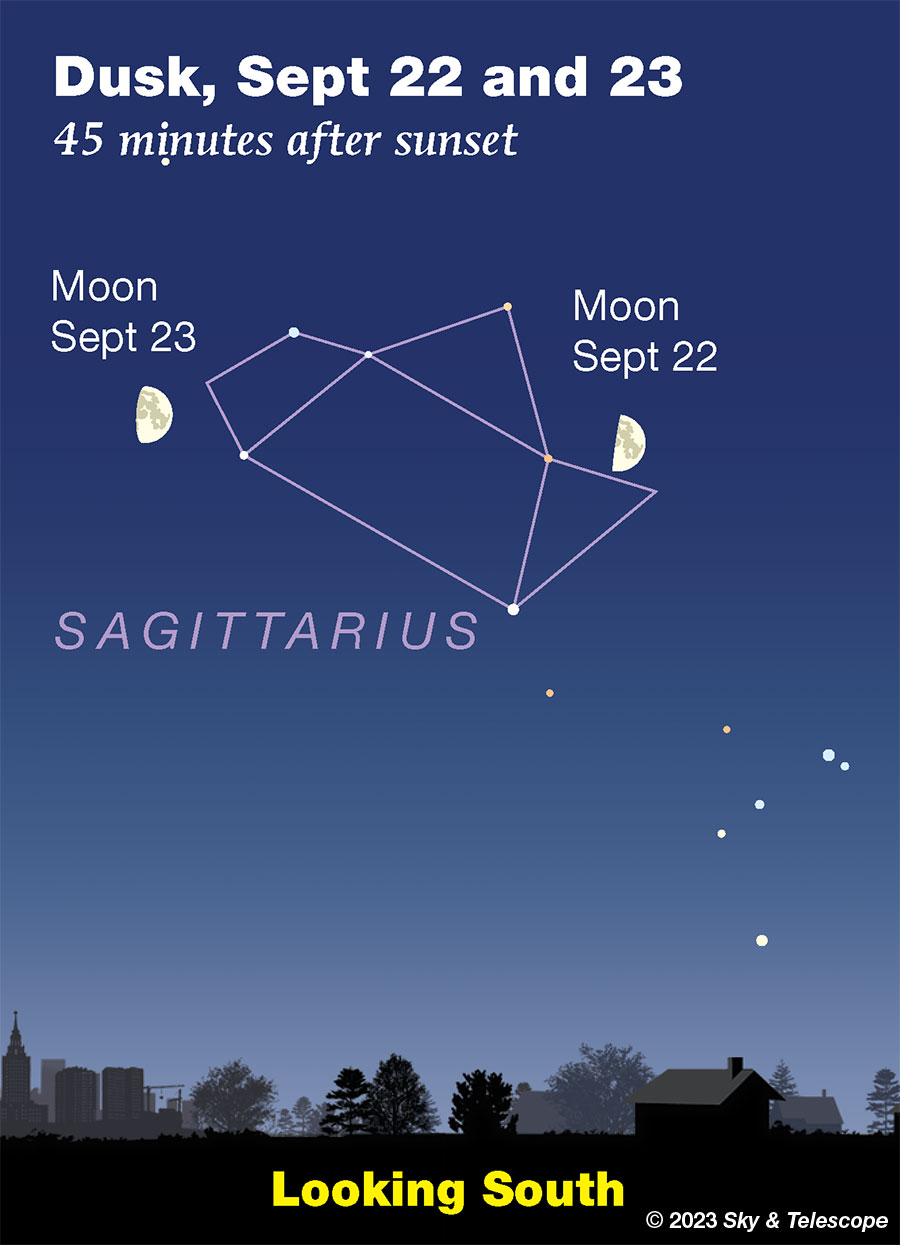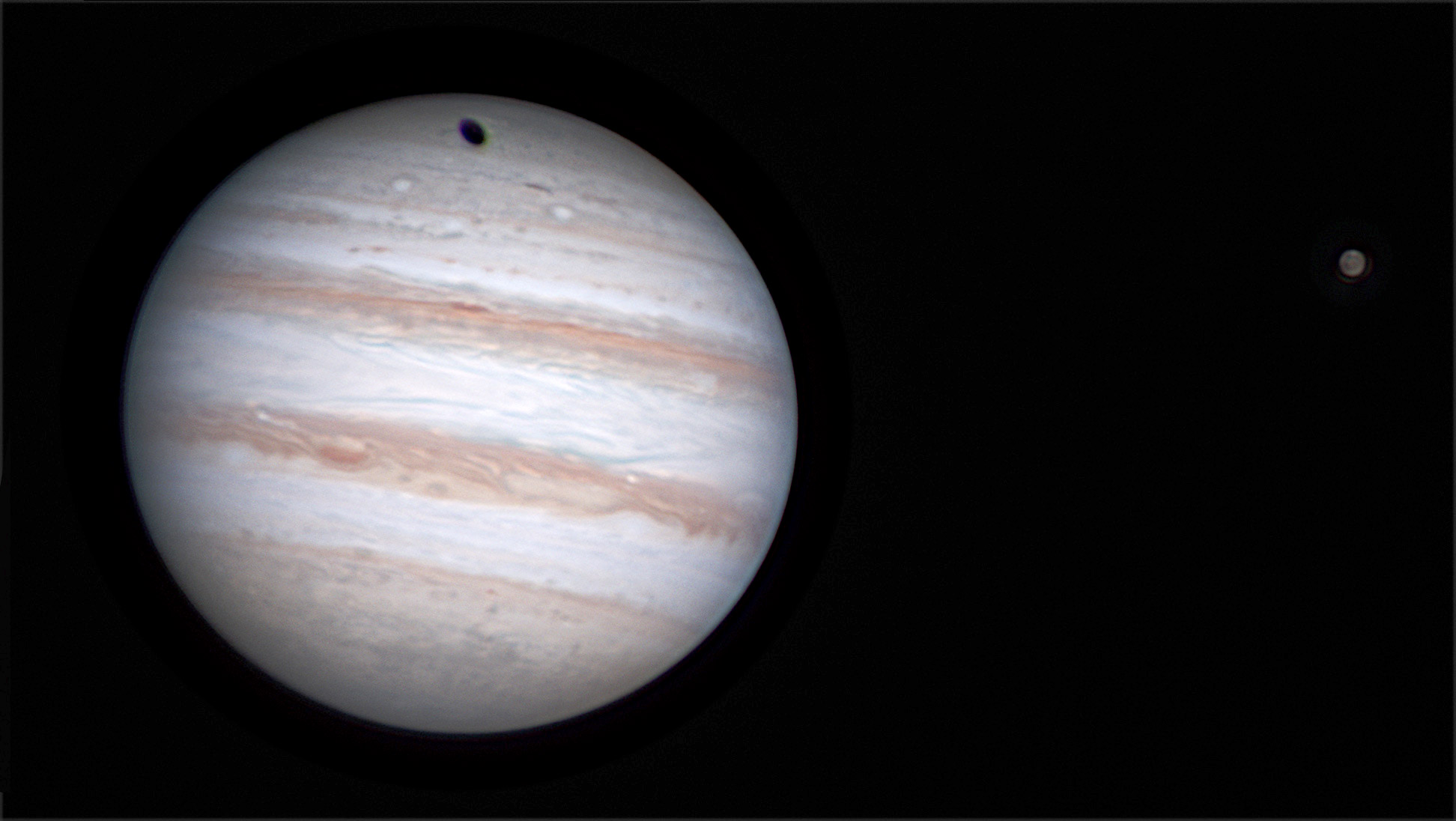Special to CosmicTribune.com, September 18, 2023, 2023
Excerpts from weekly Sky&Telescope report.
SUNDAY, SEPTEMBER 17
■ Look very low in the west-southwest in early twilight for the waxing crescent Moon. Can you see Spica twinkling 3° or 4° lower right of it? Use binoculars.
Then look due west, about 25° to the right of the Moon, for Comet Nishimura at perihelion. Use those binoculars or a wide-field telescope at low power. You have only a narrow time window between when twilight is still too bright and the comet gets too low and sets.

MONDAY, SEPTEMBER 18
■ By about 11 p.m. bright Jupiter is nicely high and shining precisely due east. Look lower left of Jupiter, by about 1½ fists at arm’s length, for the Pleiades.
A similar distance below the Pleiades, Aldebaran is rising. Nearly three fists left of the Pleiades shines Capella.
THURSDAY, SEPTEMBER 21
■ Arcturus shines in the west these evenings as twilight fades out. Capella, equally bright, is barely rising in the north-northeast (depending on your latitude; the farther north you are the higher it will be.) They’re both magnitude 0.
FRIDAY, SEPTEMBER 22
■ First-quarter Moon (exactly so at 3:32 p.m. EDT). After dark it’s just over the spout of the Sagittarius Teapot, as shown below (for Northern Hemisphere observers).

Every 24 hours the Moon moves about 13° east along its orbit with respect to the stars. That’s the distance from the spout to the handle of the Sagittarius Teapot.
SATURDAY, SEPTEMBER 23
■ It’s equinox night; fall begins in the Northern Hemisphere tonight at 2:50 a.m. EDT (11:50 p.m. PDT). That’s when the Sun crosses the equator heading south for the season. The days are getting shorter.
■ Coincidentally, when summer turns to autumn is about when Deneb takes over from brighter Vega as the zenith star after nightfall (for skywatchers at mid-northern latitudes).
SUNDAY, SEPTEMBER 24
■ The starry W of Cassiopeia stands high in the northeast after dark. The right-hand side of the W (the brightest side) is tilted up.
PLANET ROUNDUP
Mercury is very low in the east at dawn, as shown near the top of this page. Starting around September 18th, look for it about 45 minutes before sunrise very far to the lower left of bright Venus. Mercury brightens fast: from magnitude +0.2 that morning to –0.5 on the 23rd. That’s a doubling of its light in just five days.
Venus (a brilliant magnitude –4.8, in dim Cancer) is getting ever higher in the east before and during dawn. This week it’s at its peak brightness as the “Morning Star.” In a telescope it’s a thickening crescent.
Mars is out of sight behind the glare of the Sun and will remain so for the rest of the year.
Jupiter (magnitude –2.7) rises in the east-northeast not long after dark. Watch for it under the brightest stars of Aries. Jupiter dominates the eastern sky by late evening and shines highest in the south during the early-morning hours.

Saturn (magnitude +0.5, in dim Aquarius) is the “star” rather low in the southeast in twilight. It’s two weeks past opposition. Saturn shines at a good height for telescopic observing by 9 or 10 p.m., by which time Fomalhaut is twinkling two fists at arm’s length below it. Saturn stands highest in the south around 11.
Photo: Jupiter, Ganymede, and Ganymede’s shadow on Sept. 9. South is up. / S&T‘s Sean Walker from New Hampshire

You must be logged in to post a comment Login